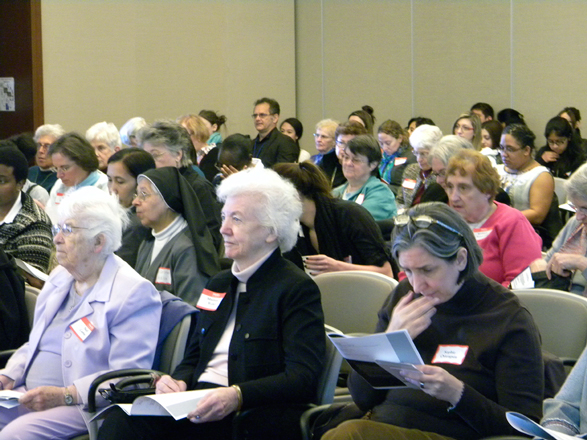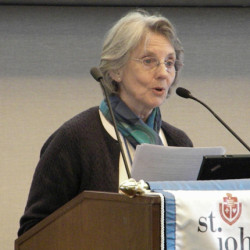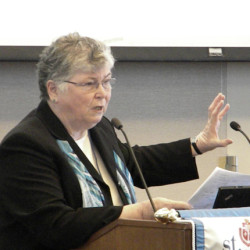
Imagine being a young person from overseas being promised new opportunities and an improved way of life in a bustling city like New York.
What could go wrong? America is the land of the free, where slavery has been abolished since the late 19th century.
Many wide-eyed young men and women – and even children – may be brought to New York each year seeking this freedom, but they may never get to experience the opportunities they were promised in the big city.
Instead, they are manipulated and exploited on the basis of sex or labor. This is human trafficking at its core.
The U.S. Deptartment of State defines human trafficking as the recruitment, harboring, transportation or obtaining of a person for labor or services through the use of force, fraud or coercion for the purpose of subjection to involuntary servitude, commercial sex or debt bondage.
In other words, human trafficking is modern-day slavery.
Grossing $32 billion annually, human trafficking is one of the world’s fastest growing criminal industries. An estimated 27 million people are currently being trafficked worldwide, with 55 percent being women and children. However, this figure is only an estimate due to the secretive nature of the business.

What’s Being Done Locally
In New York City alone, an estimated 11,000 people are victims of trafficking, according to a 2011 research study conducted by Hofstra University, Hempstead, L.I., and the LifeWay Network, a Forest Hills-based non-profit organization started in 2007 for the purpose of safe-harboring victims of trafficking and educating the public about the issue.
LifeWay Network operates a safe house in the city that provides educational and employment opportunities for female victims of sex trafficking. Sister Joan Dawber, S.C., executive director of LifeWay Network, said the women are so shocked and lacking in trust upon arriving at the safe house that it takes time to re-learn even the simplest daily tasks.
“Unlike guns and drugs…guns and drugs are sold once…a human being can be resold several times, particularly a woman who is being used for sexual exploitation,” Sister Joan said.
At the local level, women religious have come together to raise the awareness of the growing epidemic. LifeWay Network works in conjunction with the New York Coalition of Religious Congregations Stop Trafficking of People (NY-CRC-STOP) – a 35-member group of religious organizations in the metropolitan area formed in 2005 to combat human trafficking through providing safe housing for victims, educating the public and fighting for legislative advocacy.
“People have to know how pervasive [human trafficking] is; I think we have to open people’s eyes to it,” said Sister Regina Holtz, F.S.P., co-chair NY-CRC-STOP. “You almost don’t have to tell them much more. Once you see it, you can’t just sit on your hands.”

Recruiting Young People
This past February, LifeWay Network began a new educational component – under the direction of Sister Kati Hamm, S.C. – which stresses awareness of the problem, knowledge to understand what can be done and a commitment to work toward change.
For the 2013-2014 school year, Sister Kati has begun the process of recruiting volunteers, especially those of high school and college age, to help spread awareness. She and her staff will train the youth volunteers to become experts in the subject matter, and these volunteers will then conduct informational programs at local schools using new forms of media and interactive techniques.
“[Young people] are the ones who will get the word out,” Sister Kati said. “They have a lot of energy and contacts. They know where the problem is, so they can also help with the solution.”
High school and college age youths are the target age for human traffickers, since this group often travels abroad for study programs or service trips. This age demographic must be always aware of the potential warning signs, said Sister Mary Heyser, R.H.S.M., co-chair NY-CRC-STOP.
“We need to look and observe things that look a little strange,” Sister Mary said. “Like what we hear on the subway, ‘If you see something, say something.’ This is what we need to do. Don’t be afraid.”
Sister Joan, also the third co-chair of NY-CRC-STOP, said the new educational component is critical, since the more people that know about the horrors of human trafficking, the more they’ll be able to confront the problem head on.
“I think only doing it with others can you do this work,” Sister Joan said. “You can’t do it on your own. It’s not something you can do alone.”
With the support of the youth, LifeWay Network and NY-CRC-STOP will continue bringing human trafficking into the public arena through education. Like Sister Joan said, affirmative and collective action is essential to the fight.
“Some of this is invisible, and some of this is bred in the culture,” Sister Kati said. “We’re trying to say that the culture can change. We have different values. We just have to put those values where they make a difference.”

One thought on “Human Trafficking – Nuns Lead Local Effort To Educate People about Worldwide Problem”
You must sign in to leave a comment.